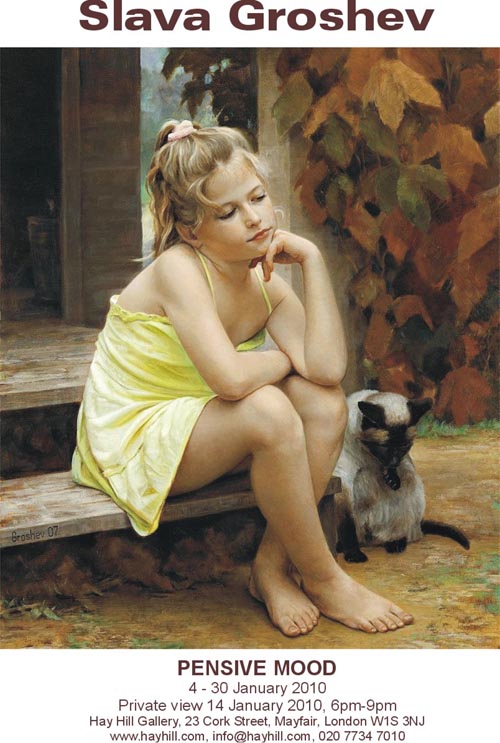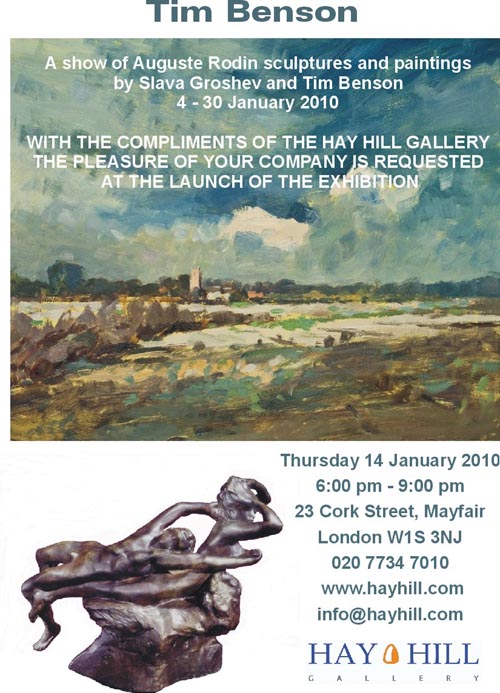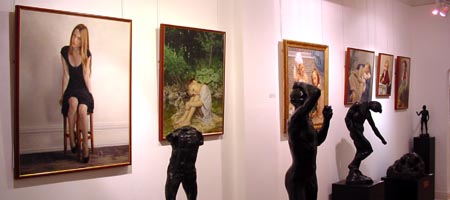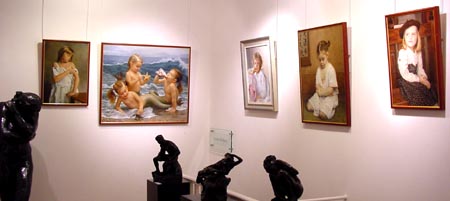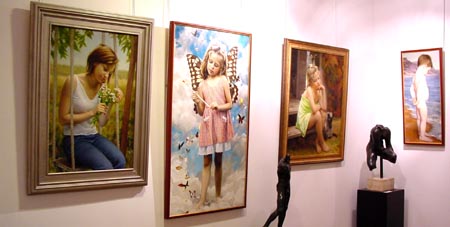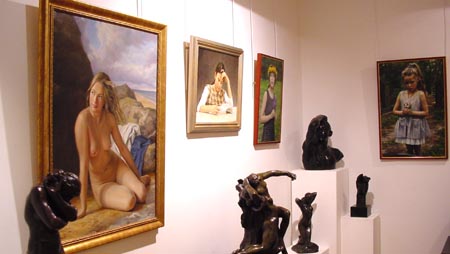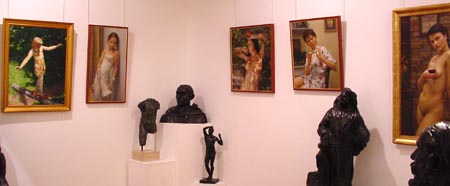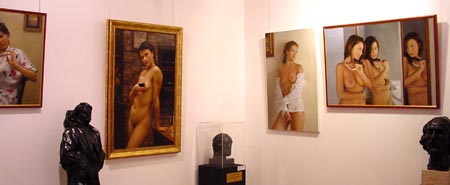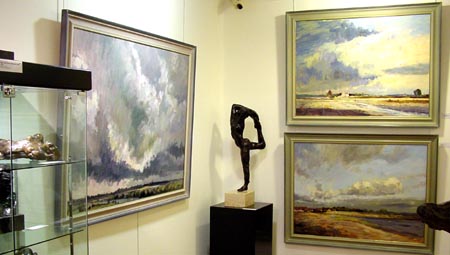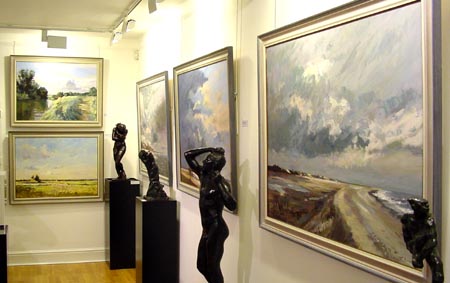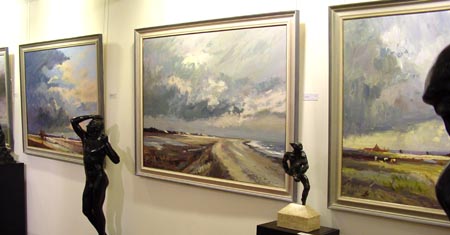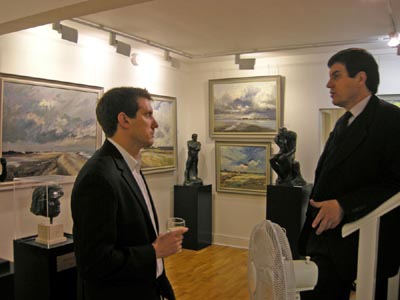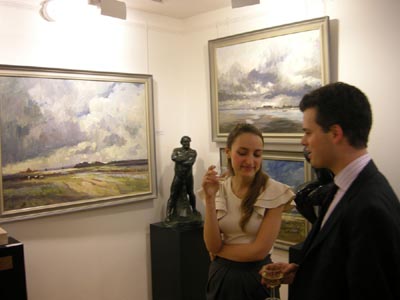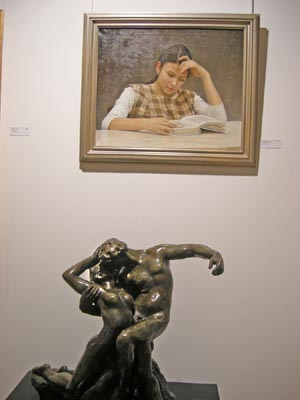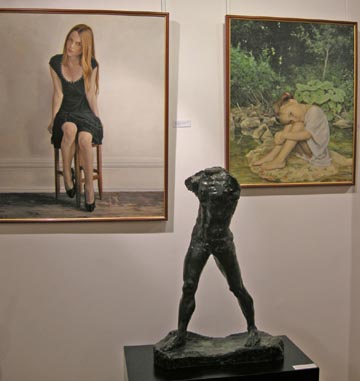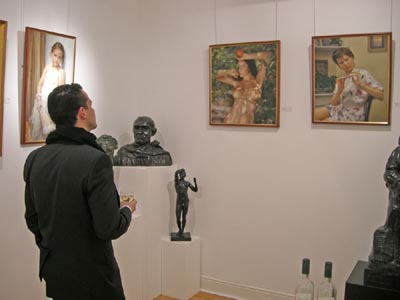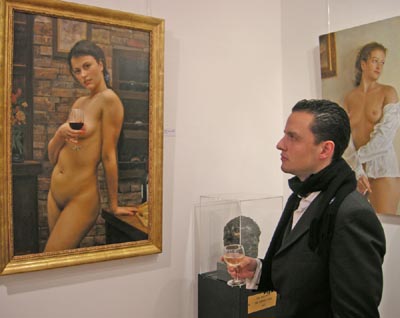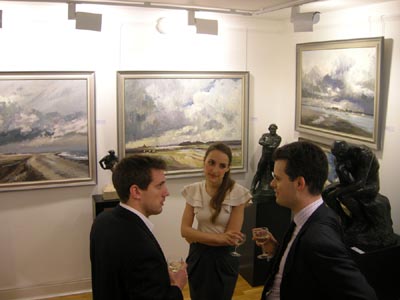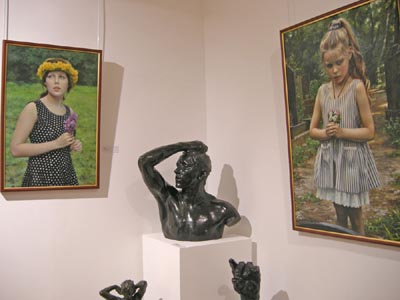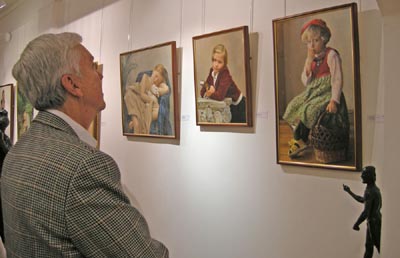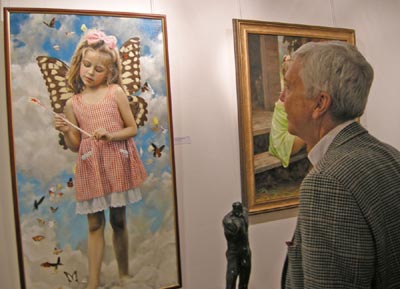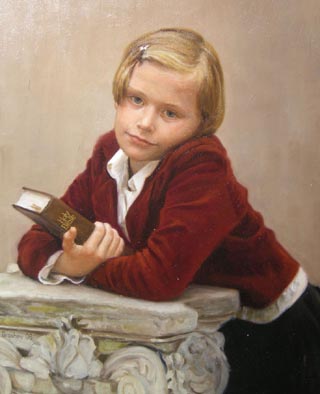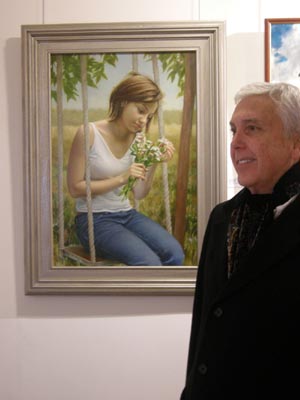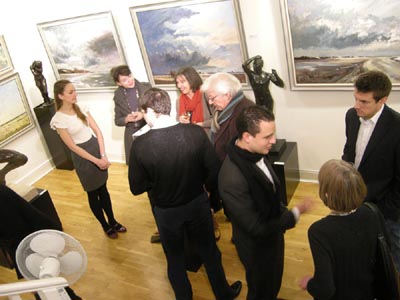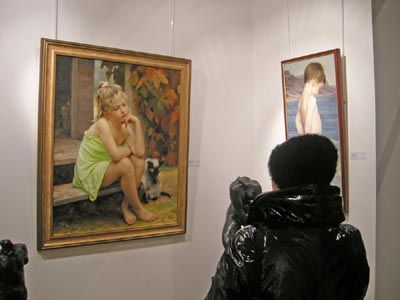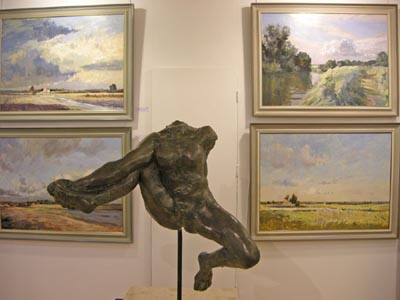 home
about
artists
exhibitions
press
contact
purchase
home
about
artists
exhibitions
press
contact
purchase |
|||||||||||||
|
The
Exhibition ‘Pensive Mood’ |
|||||||||||||
|
‘Pensive Mood’
Slava Groshev:
Crisp, vibrant and sharp, Slava' Groshev's figurative work could
easily lull you into thinking that it is, or at the very least, uses
digital photography in its creation. Don't be fooled… Slava's beautiful
works follow in the footsteps of some of the great painting masters of
our time, and are in fact created with the old fashioned paint brush. An
unquestionable abundance of talent has lead to Slava's works held in
private collections in Canada, America and throughout Europe and have
become the investors choice.
Now he is 41. Nine years ago, living in Montreal, he began to make
paintings. He always knew that he could do that, but there was
neither time nor possibility. So he started to work
hard: ten hours a day, six days a week. He was trained bases in
drawing and painting, composition and etc, at first at artistic
school, then, a couple of years with the lecturers of Moscow's
Stroganov Art Institute.
Tim Benson:
Tim Benson was born in London in 1978. After
attending school in Highgate and Hendon where he showed considerable
promise as a draughtsman he undertook an art foundation course at
Middlesex University in 1996. In 1998 he earned a place on the fine art
degree course at the prestigious Glasgow School of Art. In 1999 he
decided to transfer his degree to London and embarked on his second year
at The Byam Shaw School of Art in North London. After gaining his fine
art honours in June 2001 Tim's potential was immediately spotted by a
leading London gallery and his work was included in an exhibition of
landscape paintings in September of that year. From there he did not
look back and has subsequently shown with some of London's finest
galleries.
During the 8 years since he left art school Tim has evolved as a painter,
refining both his technique and the interpretation of his subject. In recent
years his attention has fallen on the flatlands of East Anglia, in
particular Norfolk and Suffolk. It is no coincidence that this is where both
Constable and Seago made some of their most powerful works, as the
combination of impossibly vast skies and abrupt verticals in a sometimes
overwhelmingly horizontal landscape creates views that have a stark beauty
found nowhere else. Tim, like those great artists before him, is not
interested in the minutiae of a landscape, preferring instead to render the
subject with loose, expressive brush strokes and a muted palette that
reflects the earthy hues of the scenes he paints.
Art of England, Issue 64, 2009
Among the collection of posthumous casts are such iconic works as The
Thinker, The Kiss, Eve, Age of Bronze, Balzac, The Walking Man, along
with many other well-known sculptures.
The noted Rodin Scholar Albert Elsen considered the posthumous recasting
of the sculptor's work as part of the natural evolution in the
sculptures' life. The exhibition on display shows that it is once again
possible to capture the essence of the artist's life accomplishments in
casts of the highest quality, cast from foundry plasters.
A collection of foundry plasters was assembled over several years with
the intention of reproducing a limited edition of eight bronzes of the
highest quality. In fact, using the finest craftsman and techniques
developed by Rodin's fondeurs, bronze casts were created with the utmost
attention to the details, size, and patinas which exist in casts
supervised by the artist during his lifetime. With this purpose in mind,
lifetime casts were examined, and the only foundry plasters selected
were those which maintained the details and quality of Rodin's best
works. All pieces on display are cast using a lost wax process and are
hand chiseled using authentic patinas.
Plaster was the form in which Rodin recorded his genius. First modeling
in clay, which disintegrates over time, Rodin recorded a composition's
important stages and finished form by making a negative mold (un moule
bon creu) from the clay. He then used this mold to cast a permanent form
in plaster. A plaster was always the starting point for further
innovations in the composition or replication in bronze or stone.
Auguste Rodin is generally recognized as the most important sculptor of
the 19th century. Born to a family of modest means in 1840 and slow to
gain recognition, Rodin nonetheless won five of France's largest
commissions for monuments during the 1880s and 1890s. During these
decades he produced grand public works and a vast oeuvre of drawings and
small sculptures. By 1890 Rodin had become the most renowned sculptor in
France; by 1900 he had achieved international recognition. His
innovations in form and subject matter established his reputation as the
first master of modern sculpture. Rodin's fame and productivity have
been matched by only one artist in the 20th century, Pablo Picasso.
Since his death in 1917 he has become a legend. The subject of numerous
biographies, Rodin remains largely a riddle. Despite the fact that his
life is accompanied by vast documentation, the motives of his personal
life and career are often difficult to fathom. His personality
encompassed the simultaneous expression of intensely private and grandly
public personas. In her exhaustive and deeply probing biography of the
artist, Ruth Butler summarized his personality as "lonely" (Ruth Butler,
Rodin: The Shape of Genius (New Haven and London, 1993), p. 514).
Conventional in his tastes, he held to the opinions and prejudices of a
lower-middle-class upbringing; until the last phase of his life, he
preferred to live in humble circumstances without such modern
improvements as heat and electric light. Despite modest accommodations
and a mind-numbing work schedule, Rodin was never intellectually
insular. He accrued a wide knowledge of art and literature and an
extraordinary range of human contact. Yet he had few friends. Rather, he
had colleagues and defenders, including some of the most powerful
cultural personalities and politicians of his day, and enemies in
abundance. Although generally awkward in public, Rodin could be courtly
and effusive in audiences, elegant and open in his written
correspondence and interviews.
The key to Rodin's life was his relationships with women: his strong
ties to his sister, who died when he was twenty-two; a lifelong union
with Rose Beuret, whom he married only at the very end of their lives;
and a heartbreaking affair with Camille Claudel, from which neither
participant ever fully recovered. These ties formed the tragic core of a
personality that also sought out relationships on many levels with a
host of female artists, models, dancers, fortune hunters, grandes dames,
and aristocratic soul mates. Throughout his maturity, Rodin was deeply
committed to these erotic and intellectual liaisons, attachments that
were a primary source of his creativity.
Although Rodin's materials and methods for making sculpture were not
novel, even his earliest figures are original. To the academic practice
of creating a balance between nature and an ideal, Rodin brought three
innovations: an equal attention to every detail of the work; an
insistence that the figure itself is the subject, not that the figure
portrays a subject; and the dynamism supplied by complex asymmetrical
axes. Such innovations would have remained intellectual and technical
were it not for the genius of Rodin's hands. He had a superb, unmatched
gift for
modelling
clay and plaster. Rodin was able to translate his immense passion for
work and his abiding love of the human form into thousands of small and
many grand works, the animate patterns of solitary genius.
"Nature" and "movement" were terms used by Rodin as touchstones for
making sculpture. Following nature, which Rodin insisted was essential
for a work of value, meant working from a model. The initial stages of
creating a form involved drawings and clay sketches, which he
manipulated until he had selected a pose and scale for a fully modeled
work in clay. For both small and large figures, he worked from the live
model to develop a series of profiles. Normally, Rodin employed
professionals from Paris, however, for commissions with important
historical themes, such as The Burghers of Calais, he sought out
individuals with the same origins and from the same regions as the
historic subjects. To imbue his figures with movement, or "life"
(another of his terms), Rodin returned to his models in session after
session, making additions, new profiles, and other changes. Only when
the clay figure possessed the required movement, in terms of both
implied motion and animate surface, did Rodin proceed to make an image
in plaster or another medium.
Rodin's position is now guaranteed in the pantheon of greatest artists
of Western tradition and you now have the opportunity to view over fifty
iconic sculptures and acquire some of his greatest achievements at the
Hay Hill Gallery.
For press enquiries, further information and images:
Hay Hill Gallery
Tel: 020 7734 7010
Notes to Editors:
Hay Hill Gallery founded in 1995 as a legal entity, has recently
relocated to Cork Street. The Hay Hill Gallery was founded as a joint
venture between the Russian company Art Service Centre Ltd with over
nine years experience of the international art scene, and the British
company Sirin Ltd. The Hay Hill Gallery continues to introduce modern
artists whose work pays homage to academic traditions; and mount
exhibitions
focussing
on sculpture and international art. Photos by Jonathan A Milton from the
Private View of 14 January 2010 |
|||||||||||||
|
|
|||||||||||||
